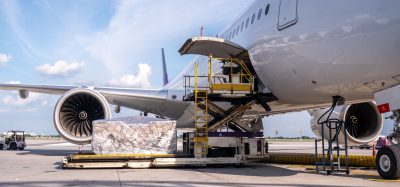UK Government aviation strategy takes step forward – the key points for airports
- Like
- Digg
- Del
- Tumblr
- VKontakte
- Buffer
- Love This
- Odnoklassniki
- Meneame
- Blogger
- Amazon
- Yahoo Mail
- Gmail
- AOL
- Newsvine
- HackerNews
- Evernote
- MySpace
- Mail.ru
- Viadeo
- Line
- Comments
- Yummly
- SMS
- Viber
- Telegram
- Subscribe
- Skype
- Facebook Messenger
- Kakao
- LiveJournal
- Yammer
- Edgar
- Fintel
- Mix
- Instapaper
- Copy Link
Posted: 10 April 2018 | George Smith (International Airport Review) | No comments yet
Last week, a document was published by the British Department for Transport showcasing the challenges expected from its six “key objectives” for an aviation strategy to be finalised next year. Here are some important points that airport operators may need to know about.


STRATEGY: The call for evidence was issued in July
After a public consultation last year, the UK Department for Transport (DfT) has published its proposals for the strategy “which will build on the aviation industry’s work to improve the flying experience for passengers at every stage of their journey”.
The Aviation Strategy is intended to set out the direction of the Government’s policy towards the industry to 2050 and beyond, taking into account the expectation of exponential growth in the sector. In July last year, a call for evidence was issued which garnered 372 responses. According to the DfT, most of these were positive and supported the strategy, but also raised important issues.
Beyond the horizon – the future of UK aviation: next steps towards an aviation strategy was published last week (April 7) and sets out more detail on the six key objectives of the strategy, namely:
- To help the industry work for its customers
- Ensure a safe and secure way to
travel - Build a global and connected Britain
- Encourage competitive markets
- Support growth while tackling
environmental impacts - Develop innovation, technology and
skills
Responding to the Government publication, Chief Executive of the Airport Operators Association Karen Dee said: “A new Aviation Strategy is a top priority for UK aviation to ensure that growing consumer demand for flights can be met sustainably. New figures released by the CAA show that in 2017, UK aviation saw 6 per cent passenger growth – and that represents 25 per cent more passengers travelling through UK airports since the last Aviation Policy Framework was published in 2013.
“Airports stand ready to meet this growing demand – more than £8bn of investments are already being delivered over the next five years. But with demand from consumers and businesses rapidly growing, the Aviation Strategy must urgently set out a clear framework for how the industry can grow beyond these existing plans. This must include how we can make best use of existing capacity; how we can improve surface access and provide more sustainable travel options; as well as how we can create additional runway and terminal capacity.
“The success of the UK economy relies on excellent international connectivity – we cannot afford to delay these important decisions. The AOA and its members stand ready to work on these and other issues as the Aviation Strategy is developed.”
The document spends a great deal of time ruminating on what the Government has done or is doing within the air transport sector, making it hard to find the main clauses that represent something of a pledge to the industry. Here are some of the highlights we drew out of the 93 pages.
Passenger experience
When the DfT talks about helping the industry work for its customers, it refers, in part, to passenger experience. It wrote about the need for airports and airlines to keep customers better informed about delays and cancellations, citing a Civil Aviation Authority (CAA) survey that found 89 per cent of passengers only found out their flight had been delayed once they had already arrived at the airport and 81 per cent discovered their flight had been cancelled after they had arrived. This, said the DfT, highlights the need to improve the speed at which flight information is relayed to passengers. Due to the impact of cancellations and delays on customer satisfaction, the DfT will be “considering” the creation of new guidance on how the industry provides information to its customers and who should be required to provide it.
On the lips of everyone in the aviation industry, seamless travel was only mentioned five times in the document. It said: “The government also wants to better understand how innovations in technology can be used to create a more seamless and personalised experience for the whole journey from door-to-door, ensuring passengers have the information they need when making choices about how to travel to the airport. This could include the options available for parking and the costs associated with them, and the speed and reliability of the available modes of public transport.”
Border control is a major sticking point for airports, especially at peak times when Service Level Agreement (SLA) standards are often not met. According to a Which? survey of large airports, there were low satisfaction levels 7 out of 13 terminals. To counteract this, the DfT has said it will look at a long term strategy to “better balance” prosperity and security at the border. It will also have a look at additional or alternative funding mechanisms in the image of those employed in other countries, though it does not specify which. It adds that a full consultation will precede any change.
The DfT puts forward a few options on how it will tackle issues in awareness and satisfaction in passenger with reduced mobility (PRM) provisions. It praises the Civil Aviation Authority’s “name and shame” policy with highlights when airports are falling below acceptable levels. Among the methods it outlines, the DfT’s report mentions strengthening training among staff, introducing an accredited training scheme, raising awareness of the assistance service provided at airports or reviewing performance standards such as for the length of time that a passenger with reduced mobility in a wheelchair has to wait to be helped off an arriving aircraft.
Other considerations that the DfT said will be discussed in more detail in the forthcoming consultation paper could include a requirement that all aircraft are equipped with an on-board wheelchair and a disabled toilet, or reducing airport walking distances through the installation of travellators.
Earlier this year, a crackdown on problem drinking was floated by the UK Home Office. Eighteen per cent of people who have flown in the last three years claim to have witnessed aggressive or drunken behaviour during flights. Through the Aviation Strategy, the Government wants to explore what supportive actions it can take to help the aviation industry in its efforts to tackle the problem.
Security
An area of interest to the industry is the use of behavioural science, how actions and traits can be interpreted by security to isolate potential threats. The Government is working with the aviation sector on early intervention with the aim to see behavioural science become “embedded” across all aspects of security. It is exploring options for further developing the existing behaviour awareness capabilities at UK airports.
In the last 10 years, more and more companies are emerging offering technological solutions to challenges in the area of screening. The Government wants to get on this wave, taking advantage of the latest developments quickly to improve security and passenger experience as well as cargo. The speed at which standards are arrived at is part of this, and the DfT has said it is keen to pick up the pace in this field.
Connected Britain
The United Kingdom is holding on to a position as one of the world’s best connected country, boosted to this status by the massive traffic volumes London Heathrow handles every year. But European airports are expanding at pace and it may not be too long before a lot of London’s traffic is snapped up by other hubs. Air services agreements (ASAs) are an important component in the UK’s success. It has 111 bilateral ASAs which the DfT have said will continue after Brexit. The document is enthusiastic about these ASAs as facilitators of trade and market access, citing the value of services to and from China. It said: “As the Aviation Strategy is developed the government is considering how it currently prioritises which agreements to update in order to maximise the competition on routes and improve the benefits to consumers.
“Factors to examine will include size of the market, attractiveness of the destination for passengers and likely competition effects. The government wants the information on current arrangements to be easily accessible to airlines and are looking at how to present that information more effectively.”
The respondents to the DfT’s call for evidence last July showed concern over air freight. “As an island nation in a globalised world,” the document said, “aviation is critical to enable businesses to deliver services across the world and to maintain the UK’s place in international supply chains”. This economic value is something the DfT was keen to emphasise. In 2016 goods worth around £178 billion were shipped by air between the UK and non-EU countries, more than 45 per cent of the UK’s non-EU trade by value.
Britain’s reliance on Heathrow is thrown into sharp relief in freight. In the same year it handled 64 per cent of the country’s freight by volume, with East Midlands Airport and Stansted following. According to the report, the importance of Heathrow to the air freight market, and its potential for growth, was an important consideration for the Government in supporting its proposed expansion.
“As the Aviation Strategy is developed,” it said, “the Government will engage with all major airports and all major operators across the market, and the businesses that rely on them, to identify barriers and understand what government can do to reduce them. This will include what action can be taken on infrastructure and capacity building.
“The Aviation Strategy will set out our approach to working closely with industry and other government departments such as HM Revenue and Customs and HM Treasury, as well as industry organisations such as the International Air Transport Association (IATA), the British International Freight Association and the Freight Transport Association, to help ensure that our air freight sector is at the forefront of technology and the facilitation processes.”
Competition
The Department for Transport’s belief in the value the privatisation has brought to the UK economy and passengers is clear, creating benefits across the board. But the responses to its call for evidence on the Aviation Strategy has forced it to consider how the liberalisation of the market has affected competition.
It said: “Firstly, whether the development of a single dominant carrier at airports could harm consumer interests in the future. While British Airways has been a dominant carrier at Heathrow for a number of years (52 per cent of flights in 2016), since 2000 other airlines have established a larger market share at some of our other largest airports (easyJet with 42 per cent at Gatwick and Ryanair 78 per cent at Stansted in 2016).
“The Government recognises the benefits of airlines developing large operating bases at airports as these lead to economies of scale which can benefit the consumer through lower fares, more destinations and greater frequencies.
“However the Government wants to explore whether this dominant position has the potential to harm consumer interests. A large number of responses to the call for evidence expressed concerns that while the market in ground handling services is competitive, market incentives are not necessarily incentivising the best outcome for either ground handling agents, airports, airlines or ultimately the consumer.
“The Government will therefore look at what is driving market performance to see whether existing regulation is promoting effective competition. While the market for terminal air navigation services in the UK has been liberalised since 1985, changes of service providers at major airports such as Gatwick (from NATS to ANS Ltd) or Birmingham (to self-supply) have only been seen in more recent years. While it is recognised that the UK is the most competitive environment in Europe, DfT requested that the CAA undertakes a review into whether the sector is subject to the right level of market conditions at relevant UK airports. The CAA is now consulting on its draft finding that appropriate market conditions do exist. The Government will consider the findings of this review as part of the Aviation Strategy.”
The issue of slots is one that was brought to the public’s attention earlier this year with the landmark ruling that gave Monarch’s administrators the right to sell the collapsed airlines slots. Again, the DfT framed the fair allocation of slots as a consumer issue. It might be assumed here that consumers refers to passengers, not the users of slots i.e. airlines.
In this context, it revisited the Heathrow third runway, saying that it would require sufficient slots to accommodate at least an additional 260,000 air transport movements per year.
It said: “The overarching principle that will guide the development of the Aviation Strategy in this area is that slot regulation should be open, transparent and fair – and ensure the most efficient use of constrained capacity in consumers’ interest.”
A number of the responses to the DfT’s call for evidence concerned regional connectivity, how the different nations and regions can benefit from the megahubs of the capital. Responding to this concern the department has said it would examine the levels of connectivity and respond if it isn’t suitable to “a clear demand”, developing a method of assessing the benefits of better connectivity to a region. “This could range,” it said, “from protecting slots at key airports, route development funds and PSOs”.
A sure fire way to get anyone in the UK aviation industry to spit out their tea is to mention Air Passenger Duty (APD). It may come as music to that the DfT has said it would like to “use the Aviation Strategy to hear from industry about how APD could be reformed to support regional airports as well as other policy objectives of the strategy, such as environmental, growth, competition and connectivity”.
Growth and the environment
Supporting growth while tackling environmental impacts came second only to safety and security in what the call for evidence respondents ranked as most important to the strategy. The report said the top six issues mentioned by respondents all related to the challenges of delivering future capacity, utilising current capacity and addressing the concerns that people have in respect to aviation’s contribution to noise, air quality and carbon levels.
The Government is looking to support R&D to improve fuel efficiency. “Step changes in aviation technology such as hybrid and electric aircraft offer the potential to mitigate environmental issues, including carbon and noise emissions. The Government will therefore work with bodies like the ATI and key industry players, to support the emergence of hybrid and electric aircraft use, where it makes commercial and transport sense.”
“The challenge for the Aviation Strategy to address will be to ensure that the right regulatory arrangements are in place to manage these impacts, particularly noise, but also other issues such as air quality.
“Policy options that the Government intends to explore include setting noise targets and aviation specific air quality targets; strengthening noise controls and enforcement of these controls; strengthening incentives to bring forward production and operation of quieter aircraft; enhancing compensation for those exposed to significantly increased levels of aviation noise in the airspace change process, and the use of other types of mitigation where noise reduction is not possible.”
Related topics
Air freight and cargo, Air traffic control/management (ATC/ATM), Airport development, Airside operations, Biometrics, Border control, Capacity, Economy, Passenger experience and seamless travel, Regulation and Legislation, Safety, Security, Sustainability, Terminal operations


















